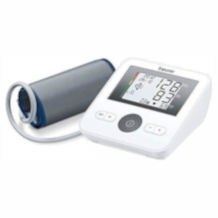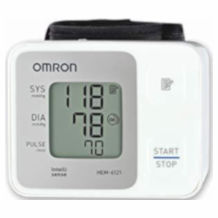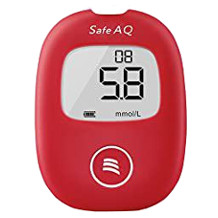Forehead thermometer purchasing advice: how to choose the right product
- What you need to know
- Forehead thermometers are a quick and convenient way to take a temperature.
- Infrared rays make temperature measurement completely contactless.
- The temperature can be taken even when the patient is asleep, which is especially useful for children.
- There are different versions, some of which are even suitable for measuring in the ear or at the temple.
- When buying a device, it is important to consider not only the measurement accuracy but also the measurement duration, the number of memory locations and the user-friendliness of the display.
A must in every medicine cabinet
An increased body temperature or fever is a normal reaction of the body to viruses or bacteria and a sign that the immune system is activated, for example in the case of a cold, flu or a gastrointestinal infection. As the temperature rises, the body tries to ward off and fight off pathogens. For a healthy adult, a body temperature in the range of 34.7 to 37.8 degrees Celsius is considered normal – depending on the part of the body where the temperature is measured. Since it is different for everyone, but especially for children, this range is correspondingly wide.
A clinical thermometer therefore belongs in every medicine cabinet – especially if you have children. After all, the little ones sometimes react to even a small infection with fever, and much more quickly than adults.
At what temperature is it a fever?
Values of just under 38 degrees Celsius are considered to be an elevated temperature; a fever is defined as a temperature of 38 degrees Celsius or higher. If the fever remains within limits, there is usually no reason to worry. Nevertheless, it makes sense to check the temperature regularly in case of illness and to observe the fever curve in order to get an idea of the course of the illness. In an acute case, when the fever rises above 40 degrees, you can then react immediately and seek medical advice.

Taking a temperature from then until today
Which type of clinical thermometer you choose depends primarily on which temperature-measuring method is most comfortable for you. If you prefer the conventional method, which was common well into the 1970s, using the classic glass clinical thermometer with a metal tip, this is still possible today. However, it can take a few minutes until the measurement result is available. That is why these models have gradually been replaced by the modern digital thermometers, which work faster.
For both models, contact with the body is necessary to take the temperature. This means that taking a temperature works in the mouth or under the armpit, among other places. However, taking a temperature is much faster and more comfortable with the completely contactless clinical thermometers, which work by means of infrared rays and are known as forehead thermometers.
The different methods of temperature measurement
When it comes to devices for measuring body temperature, a distinction must be made between contact and infrared thermometers. The individual measuring methods in turn depend on the type of thermometer or the part of the body where the temperature is measured:
- under the armpit (axillary)
- in the mouth (oral) or under the tongue (sublingual)
- in the anus (rectal)
- in the ear (auricular)
- on the forehead (frontal)
For a long time, the rectal method was considered the most accurate because it measures the body’s core temperature. At the other body sites, the temperature sometimes deviates by up to two degrees. But especially for children or when they feel unwell, taking the temperature in the anus quickly becomes an additional burden. That is why forehead thermometers are becoming more and more popular: they show the temperature in a non-contact, comfortable way within seconds. Although they vary in measurement duration, accuracy and additional features depending on the model, overall they have many convincing advantages:
Advantages
- Results in seconds
- Very comfortable measuring method
- Contactless and hygienic
- Ideal for babies, children and elderly people
- Measurements can be taken during sleep
- Partial measurement in the ear possible
Disadvantages
- Measurement at forehead or temple often not exact
- Sometimes inaccurate with high humidity
How a forehead thermometer works
An infrared forehead thermometer allows you to take a temperature without contact. It works very simply: it measures the heat radiation that the body or object emits due to its temperature. The radiation spectrum measured by the thermometer allows conclusions to be drawn about the temperature of the body or object in question.

Since each object emits a different radiant heat, conversely, the amount of radiation emitted depends on the type of object. So for accurate measurement to be possible, a thermometer that can measure the temperature of different objects must know what it is. With most forehead thermometers, this can be set manually.
Combination thermometers
Many infrared thermometers can be used both as forehead thermometers and for measuring in the ear. For use in the ear, you usually only need to attach an attachment. The correct application varies slightly depending on the manufacturer.
But be careful: temperatures measured at different parts of the body should never be compared, as they will be different depending on where they are measured. There is a difference between the core body temperature and the surface temperature: while the core temperature is unaltered, the surface temperature is composed of the temperature of the skin and the ambient temperature. Even with the times of day, only equivalent measurements should be compared. Body temperature is highest in the evening and lowest in the morning.
Using a forehead thermometer
It is especially important to use forehead thermometers correctly; only then do they provide correct measurement results. A distance of at least one centimetre up to five centimetres from the forehead or temple is recommended.
Always read the operating instructions, as these values can vary from manufacturer to manufacturer. For an unaltered result, it is essential that the forehead is not covered by hair and free of cream and sweat. In addition, physical exertion or exercise of any kind should be avoided before measuring.
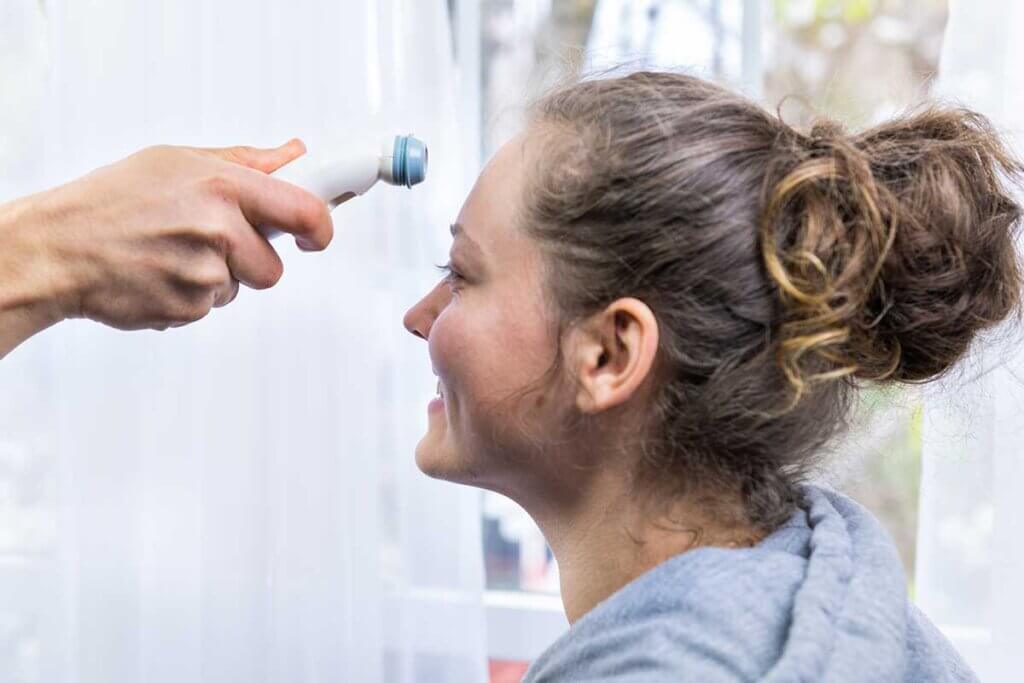
When using an infrared thermometer for the first time, it is helpful to take several measurements in quick succession. Only when you achieve consistent, uniform measurement results can you be sure that you have used the thermometer correctly. This also serves to get a feel for the infrared thermometer.
Practice, practice, practice
In practical tests for the consumer magazine Stiftung Warentest (2008), which were carried out with medical professionals and lay people, it turned out that the accuracy of the measurement results actually depends on the skill and savvy of the user: Skilled nurses obtained accurate results right from the start. The inexperienced among the test subjects, on the other hand, needed several attempts.
What matters when buying a thermometer
When buying a clinical thermometer, you need to be able to rely on it working properly and doing exactly what it is supposed to do: measure the temperature reliably – regardless of which model you choose. The range of infrared thermometers is wide, as is the price range, from just under 10 euros to under 100 euros. Most models, however, are in the middle price segment between 35 and 70 euros.
Leading brands
Beurer | Hylogi | Braun | Medisana | Trustown | OMRON | NUK | Wick | Sanitas
Tests have shown that a lower price does not necessarily affect quality. One of the main criteria for the purchase decision should certainly be how often you need the clinical thermometer. If it is only rarely used, a cheap, simple model is sufficient. However, if you have a family with children or someone who is permanently ill and needs to check their temperature regularly, you should look for good quality and useful features when choosing an infrared thermometer.
Measuring accuracy
Infrared thermometers measure the temperature on the surface of the skin. Since the surface temperature depends on the ambient temperature in the room, measurement accuracy is even more important here. For the most accurate measurement, the patient and the thermometer should be in the room for a while before the measurement is taken. In addition, some models offer a practical additional function: they measure the temperature of the skin as well as that of the surroundings – the measurement result is then composed of both values.
If you want to take a temperature at night when your child is sleeping, please note the following: If your child is covered very warmly or is lying in a thick sleeping bag, the readings may be inaccurate, which means that the clinical thermometer may show a higher temperature due to a build-up of heat.
Do not shine directly into the eyes
There is little data on the effect of infrared radiation on the body. However, so-called near infrared, for example from lasers, can be harmful if it comes into direct contact with the eyes. Mid-infrared is used with infrared thermometers. If you use it correctly, i.e. only on the forehead or temple, the radiation is therefore not dangerous.
Measuring time
With infrared thermometers, the measurement is quick: You get the result within a few seconds. Some thermometers show it after just one second. However, depending on the model, the maximum measuring time can be up to 30 seconds. However, since this method is usually very fast, it is ideal for babies and small children.
The special feature of infrared thermometers is that they can also be used to measure at the temple. For example, if your child has a high fever and you want to check the temperature during the night, you do not have to wake him or her up, but can take the temperature quickly and unnoticed. For all other age groups, this uncomplicated contactless measuring method is of course also suitable.
Measured value storage
Especially with longer or more severe courses of illness and fever, it is useful to be able to observe and document the temperature curve. For this reason, infrared thermometers are equipped with the function of storing measured values. Some products can store up to 99 readings. On average, the number is around 50 to 60 values. Others, however, offer only 10 or only the previous value.
Beep and display
All infrared thermometers have a signal tone that sounds when the measurement is finished. The value is shown on the display. By no means all models offer the same comfort with this functionality. In any case, make sure that the display is illuminated so that the temperature can also be read at night. This is especially useful if you want to take a reading while your child is sleeping. Some infrared thermometers even show either a smiling smiley on the display when there is no fever or a crying smiley when the temperature has reached a certain level.
Optional accessories
In addition to the standard functions, some models offer helpful additional features. For example, you can also measure the temperature of other objects such as baby food, meals, liquids or the room temperature, which is often already displayed by default. However, the respective mode usually has to be set manually.
Some thermometers are equipped with a fever alarm display, a silent or night mode and an automatic switch-off function. A particularly practical feature is the automatic distance warning if the distance to the forehead is not correct. The term “age precision” is used more frequently; this means that a thermometer has settings for different age levels. Among others, there is the division into 0 to 3, 3 to 36 and 36+ months. This allows a more accurate assessment of the respective temperature values.
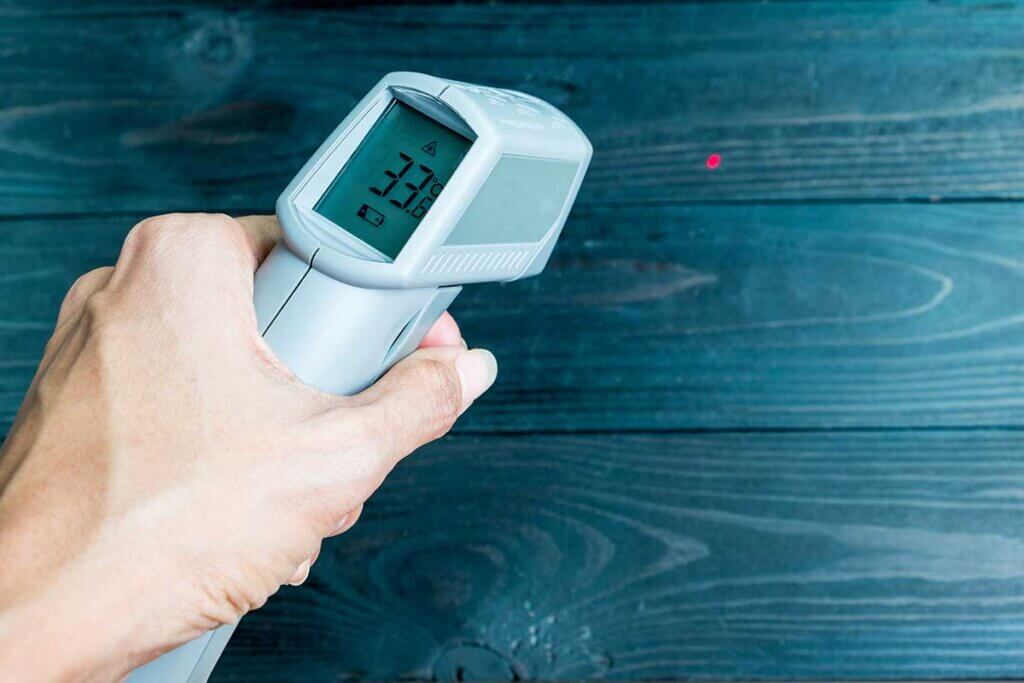
Most devices are equipped with a case, a box or a small bag so that the thermometer can always be stored or transported safely. Incidentally, infrared thermometers are powered by batteries: Usually with AAA batteries, but in rare cases also with block batteries or button cells. Sometimes batteries are included in the delivery, but for some you have to buy them separately.
How do I clean an infrared thermometer?
Since infrared thermometers are contactless, they are considered to be particularly hygienic. Nevertheless, you should clean or disinfect the thermometer regularly. If the patient takes the temperature himself, germs and bacteria can settle on the thermometer. A soft cloth slightly moistened with disinfectant is suitable for this purpose, and you only need to wipe the thermometer with it. The attachment for the ear should also be cleaned carefully after each use – see the instructions for use. Never clean an infrared thermometer under running water and do not place it in a filled sink, as it is usually not waterproof.

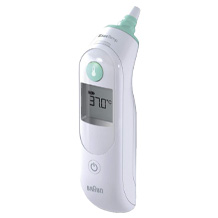
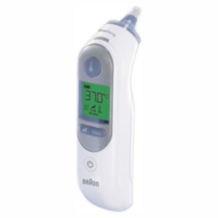
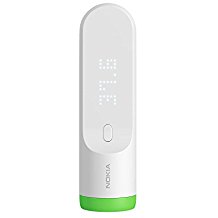
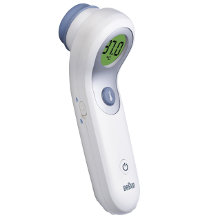

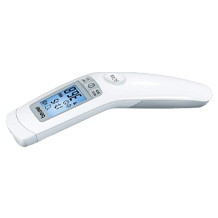
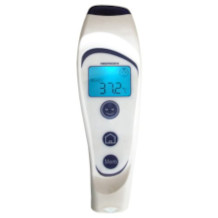
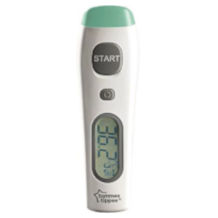
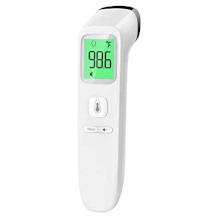
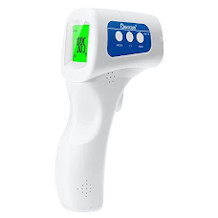
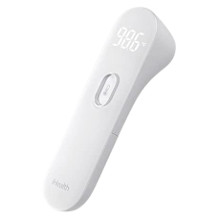
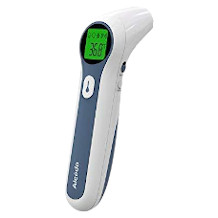

 7,959 reviews
7,959 reviews
